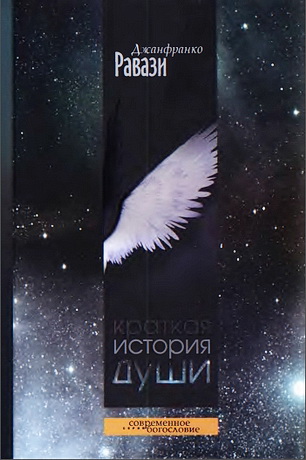
New Testament Reading Guides
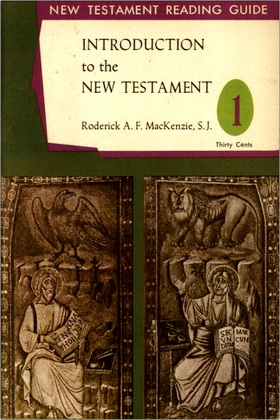
The New Testament is a collection of twenty-seven separate compositions; traditionally these are called “books,” though by modem standards they are hardly longer than articles. They range in length from the 18,000 words of St. Matthew’s Gospel to the 220 words of St. John’s Third Epistle. They are arranged, not in order of composition, but in a rough grouping by categories or types of writing: first, narrative accounts of the words and deeds of Jesus of Nazareth (the four Gospels), and of the first generation of his followers (the book of Acts); second, letters addressed to particular groups among those followers, by persons of authority (the twenty-one epistles); third, a circular message addressed to seven such groups, consisting mainly of an elaborate vision-narrative (the Apocalypse). All these were composed within less than a century after the crucifixion of Jesus, which may be dated about the year 30 a.d. The language in which they are written is called Koine (Common) Greek; this was the standard vernacular of the eastern half of the Roman empire in the first century a.d., a language which had evolved considerably from the classical Greek of a few centuries earlier.
This collection was the official literature of a particular religious community. Each part of it was written by some member of the “primitive Church,” i.e., the Christian brotherhood of the first century. Its limits, namely the inclusion of these particular writings and the exclusion of all others, were determined by that same community over a period of several generations.
1 – Introduction to the New Testament
Second edition, revised and expanded. – By R.A.F. MacKenzie, S.J. Pontifical Biblical Institute Rome, Italy
Collegeville, MN: The Liturgical Press, 1965. – 67 p.
Introduction to the New Testament – Contents
- Composition of the New Testament
- The Political Background
- Religious Groupings
- The Apostolic Church
- The Apostolic Teaching
- The Writing of the Gospels
- The New Testament Epistles
- The Johannine Writings
- The Authors of the New Testament Books
- The Message of the New Testament
- The Formation of the Canon of the New Testament
- Manuscripts and Texts
- Conclusion
- Chronological Table
- Abbreviations
- Review Aids and Discussion Topics
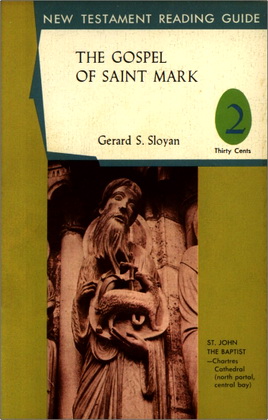 2 – The Gospel of Saint Mark
2 – The Gospel of Saint Mark
Introduction and Commentary by Gerard S. Sloyan The Catholic University of America Washington, D.C.
Collegeville, MN: The Liturgical Press, 1960. – 132 p.
The Gospel of Saint Mark - Contents
Introduction to the Gospel of St. Mark
Text and Commentary
- I. Prelude (1:1-13)
- II. The Galilean Ministry (1:14-7:23)
- III. Journeys to Tyre, Sidon, the Decapolis, Return to Galilee (7:24-9:49)
- IV. Going up to Jerusalem via Trans-jordan and Jericho (10:1-52)
- V. The Jerusalem Ministry (11:1-13:37)
- VI. The Passion and the Resurrection (14:1-16:8)
- VII. Conclusion (16:9-20)
Passages used as Gospel Reading at Mass
Abbreviations
Review Aids and Discussion Topics
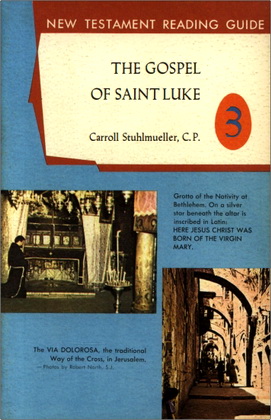 3 – The Gospel of Saint Luke
3 – The Gospel of Saint Luke
Second edition, revised and expanded. - Introduction and Commentary by Carroll Stuhlmueller, C.P. Passionist Fathers Seminary Louisville, Kentucky
Collegeville, MN: The Liturgical Press, 1964. – 168 p.
The Gospel of Saint Luke – Contents
Introduction to St. Luke’s Gospel
Text and Commentary
The Prologue (1:1-4)
- Part I—The Infancy Narrative (1:5 — 2:52)
- Part II—Preparation for the Public Ministry (3:1—4:13)
-
Part III—The Galilean Ministry (4:14—9:50)
- 1. The Beginning (4:14—5:16) - 2. Conflicts (5:17—6:11) - 3. The Full Ministry (6:12—8:21) - 4. Some Miracles and Words of Jesus (8:22—9:17) - 5. Peter’s Profession of Faith (9:18-21) - 6. Other Miracles and Words (9:22-50)
-
Part IV—The Journey Narrative (9:51—19:28)
- 1. Section Proper to St. Luke (9:51—18:14) - 2. Section Common to the Synoptic Gospels (18:15—19:28)
- Part V—The Jerusalem Ministry (19:29—21:38)
-
Part VI—The Passion and Glorification of Jesus (22:1—24:53)
- 1. The Paschal Meal (22:1-38) - 2. The Passion, Death, and Burial (22:39—23:56) - 3. The Resurrection and Ascension (24:1-53)
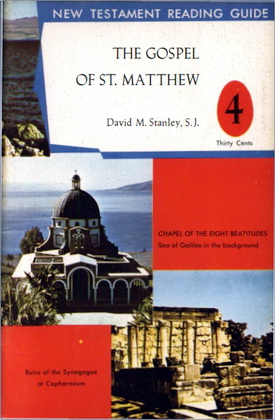 4 – The Gospel of St. Matthew
4 – The Gospel of St. Matthew
Second edition, revised and expanded. - Introduction and Commentary by David Michael Stanley, S. J. Associate Professor of New Testament Theology School of Religion State University of Iowa
Collegeville, MN: The Liturgical Press, 1963. – 132 p.
The Gospel of St. Matthew - Contents
Introduction to the Gospel of St. Matthew
Text and Commentary
- Prologue: The Infancy Narratives (1:1-2:23)
- Book One: Foundations of the Kingdom (3:1-7:29)
- Book Two: Dynamic of the Kingdom (8:1-11:1)
- Book Three: Mystery of the Kingdom (11:2-13:53)
- Book Four: The Kingdom become Church (13:54-19:1)
- Book Five: The Universalism of the Kingdom (19:2-26:2)
- The Good News of Jesus’ Passion and Resurrection (26:3-28:20)
Passages used as Gospel Reading at Mass
Review Aid and Discussion Topics
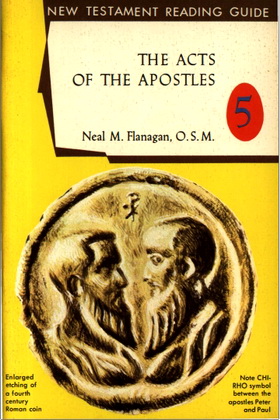 5 – The Acts of the Apostles
5 – The Acts of the Apostles
Second edition, revised and expanded. - Introduction and Commentary by Neal M. Flanagan, O.S.M. Stonebridge Priory Lake Bluff, Illinois
Collegeville, MN: The Liturgical Press, 1964. – 130 p.
The Acts of the Apostles - Contents
Introduction to the Acts of the Apostles
Text and Commentary
- I. Introduction
- II. Jerusalem: Departure Point for the Church’s Development
- III. The Church’s First Expansion Beyond Jerusalem
- IV. Antioch: The New Center of the Church’s Growth
- V. Paul’s Second Missionary Journey
- VI. Paul’s Third Missionary Journey
- VII. Paul, A Prisoner for Christ
Passages from the Acts of the Apostles used as Epistle Reading at Mass
Review Aids and Discussion Topics
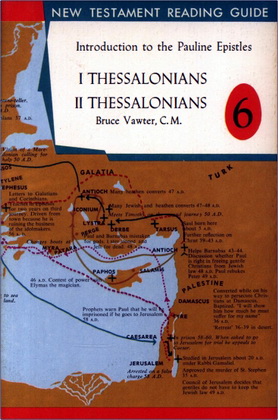 6 – Introduction to the Pauline Letters, First and Second Thessalonians
6 – Introduction to the Pauline Letters, First and Second Thessalonians
Second revised edition. - Introduction and Commentary by Bruce Vawter, C.M. Kenrick Seminary St. Louis, Missouri
Collegeville, MN: The Liturgical Press, 1960. – 68 p.
Introduction to the Pauline Letters, First and Second Thessalonians – Contents
Introduction to the Pauline Letters
The Meaning of Paul
The Pauline Writings
Introduction to First and Second Thessalonians
Abbreviations
Passages from Thessalonians used as Reading at Mass
Commentary to First Thessalonians
- Greetings 1:1 - Thanksgiving 1:2-10 - Paul’s mission 2:1-12 - Fidelity of Thessalonians 2:13-16 - Timothy’s mission 2:17-3:13 - Exhortation to chastity 4:1-8 - Fraternal charity 4:9-12 - The parousia and the dead 4:13-18 - The time of the parousia 5:1-3 - The need to be ready 5:4-11 - Final exhortation 5:12-22 - Conclusion 5:23-28
Commentary to Second Thessalonians
- Greetings 1:1-2 - Thanksgiving 1:3-10 - Prayer 1:11-12 - The parousia: not yet 2:1-7 - End of the Antichrist 2:8-12 - Thanksgiving and exhortation 2:13-17 - Request for prayers 3:1-5 - Against the irregular 3:6-12 - Final charge and conclusion 3:13-15
Review Aids and Discussion Topics
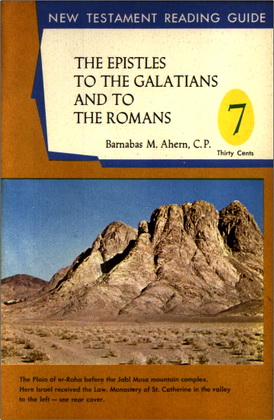 7 – The Epistle to the Galatians and the Epistle to the Romans
7 – The Epistle to the Galatians and the Epistle to the Romans
Introduction and Commentary by Barnabas Mary Ahern, C.P. Passionist Fathers Seminary Louisville, Kentucky
Collegeville, MN: The Liturgical Press, 1960. – 100 p.
The Epistle to the Galatians and the Epistle to the Romans - Contents
Introduction to the Epistle to the Galatians
Text and Commentary
- Greeting (1:1-5) - I. Defense of his authority (1:11—2:21) - II. Defense of his doctrine (3:1—4:31) - III. Exhortation (5:1—6:10) - IV. Word of warning and conclusion (6:11-18)
Introduction to the Epistle to the Romans
Text and Commentary
- Greeting (1:1-7) - I. Apart from Christ, no salvation (1:18—3:20) - II. Salvation through Christ (3:21—4:25) - III. Riches and requirements of salvation (5 :1—8:39) - IV. Jew and Gentile in God’s plan (9:1—11:36) - V. Counsels and exhortations (12:1—15:12) - VI. Final words and greetings (15 :14—16:27)
Abbreviations
Passages from Galatians used as Epistle Reading at Mass
Passages from Romans used as Epistle Reading at Mass
Review Aids and Discussion Topics
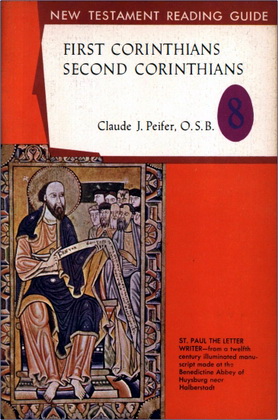 8 – The First and Second Epistles of St. Paul to the Corinthians
8 – The First and Second Epistles of St. Paul to the Corinthians
Introduction and Commentary by Claude J. Peifer, O.S.B. St. Bede Abbey Peru, Illinois
Collegeville, MN: The Liturgical Press, 1960. – 115 p.
The First and Second Epistles of St. Paul to the Corinthians - Contents
The First Epistle to the Corinthians
- Introduction - Text and Commentary
The Second Epistle to the Corinthians
- Introduction - Text and Commentary
Abbreviations
Passages from First Corinthians used as Epistle Reading at Mass
Passages from Second Corinthians used as Epistle Reading at Mass
Review Aids and Discussion Topics
Map: “Cities of St. Paul”
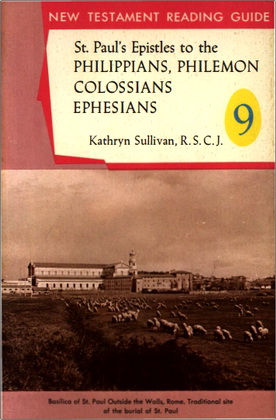 9 – St. Paul’s Epistles to the Philippians, Philemon, Colossians, Ephesians – The Captivity Epistles
9 – St. Paul’s Epistles to the Philippians, Philemon, Colossians, Ephesians – The Captivity Epistles
Introduction and Commentary by Mother Kathryn Sullivan, R.S.C J. Manhattanville College of the Sacred Heart Purchase, New York
Collegeville, MN: The Liturgical Press, 1960. – 84 p.
St. Paul’s Epistles to the Philippians, Philemon, Colossians, Ephesians - Contents
- Introduction to the Captivity Epistles
- Introduction to the Epistle to the Philippians
- Text and Commentary
- Introduction to the Epistle to Philemon
- Text and Commentary
- Introduction to the Epistle to the Colossians
- Text and Commentary
- Introduction to the Epistle to the Ephesians
- Text and Commentary
- Map: Cities of St. Paul
- Abbreviations
- Passages from the Captivity Epistles used as Reading at Mass
- Review Aids and Discussion Topics
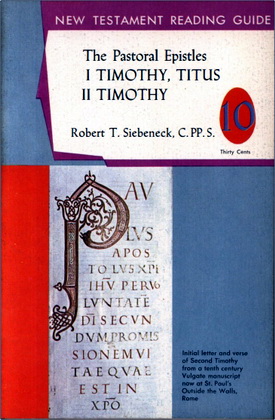 10 – The Pastoral Epistles: First Timothy, Titus, Second Timothy
10 – The Pastoral Epistles: First Timothy, Titus, Second Timothy
Introduction and Commentary by Robert T. Siebeneck, C.PP. S. St. Charles Seminary Carthagena, Ohio
Collegeville, MN: The Liturgical Press, 1960. – 76 p.
The Pastoral Epistles: First Timothy, Titus, Second Timothy – Contents
- Introduction to the Pastoral Epistles
- The First Epistle to Timothy
- Text and Commentary
- The Epistle to Titus
- Text and Commentary
- The Second Epistle to Timothy
- Text and Commentary
- Abbreviations
- Passages from the Pastoral Epistles used as Epistle Reading at Mass
- Review Aids and Discussion Topics
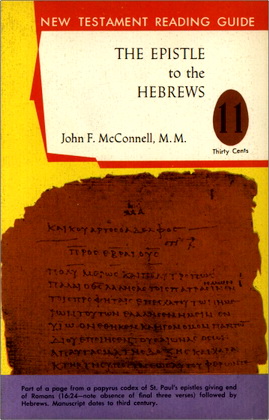 11 – The Epistle to the Hebrews
11 – The Epistle to the Hebrews
Introduction and Commentary by John F. McConnell, M.M. Maryknoll Seminary Glen Ellyn, Illinois
Collegeville, MN: The Liturgical Press, 1960. – 76 p.
The Epistle to the Hebrews – Contents
The Epistle to the Hebrews
Introduction
Text and Commentary
- I. The Living Way and the Living Word (1:1—4:13)
- II. The Living Way and the Life of Worship (4:14—10:31)
- III. The Living Way and the Life of Faith (10:32—13:17)
- IV. Conclusion (13:18-25)
Abbreviations
Passages from Hebrews used as Epistle Reading at Mass
Review Aids and Discussion Topics
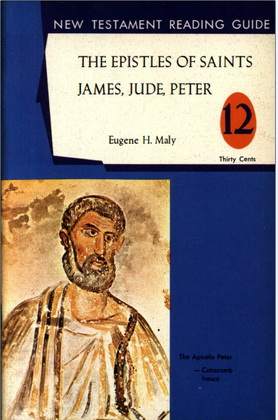 12 – The Epistles of Saints James, Jude, Peter
12 – The Epistles of Saints James, Jude, Peter
Introduction and Commentary by Eugene H. Maly Mt. St. Mary’s of The West Norwood, Ohio
Collegeville, MN: The Liturgical Press, 1960. – 75 p.
The Epistles of Saints James, Jude, Peter – Contents
- Introduction to the Epistle of St. James
- Text and Commentary
- Introduction to the Epistle of St. Jude
- Text and Commentary
- Introduction to the First Epistle of St. Peter
- Text and Commentary
- Introduction to the Second Epistle of St. Peter
- Text and Commentary
- Passages from the Epistles of Sts. James, Jude, Peter used as Reading at Mass
- Review Aids and Discussion Topics
 13 – The Gospel of St. John and the Johannine Epistles
13 – The Gospel of St. John and the Johannine Epistles
Collegeville, MN: The Liturgical Press, 1960. – 136 p.
The Gospel of St. John and the Johannine Epistles – Contents
Introduction to the Gospel of St. John
Text and Commentary
-
Part One: The Book of Signs
- 1. First Week of the New Creation - 2. Replacing Jewish Institutions; Reaction to Jesus - 3. Replacing the Feasts of the Jews - 4. From Death to Life and from Life to Death
-
Part Two: The Book of Glory
- 1. The Last Supper - 2. Trial and Death - 3. The Resurrection Appearances in Jerusalem
- Epilogue: Appearances in Galilee
Introduction to the Johannine Epistles
- Text and Commentary on First John
- Text and Commentary on Second John
- Text and Commentary on Third John
Abbreviations
Passages from St. John used as Readings at Mass
Review Aids and Discussion Topics
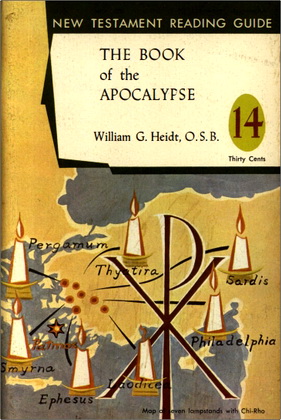 14 – The Book of the Apocalypse
14 – The Book of the Apocalypse
Introduction and Commentary by William G. Heidt, O.S.B. Director: The Liturgical Press Collegeville, Minnesota
Collegeville, MN: The Liturgical Press, 1962. – 132 p.
The Book of the Apocalypse – Contents
Introduction
Theology of the Apocalypse
Sequence Analysis
Text and Commentary
- Introduction - The Seven Letters - The Seven Seals - The Seven Trumpets - The Seven Signs - The Seven Bowls - The Seven Sights - Denouement — The Holy City Jerusalem - Final Triple Attestation - Concluding Blessing
Abbreviations
Passages used as Reading at Mass
Review Aids and Discussion Topics


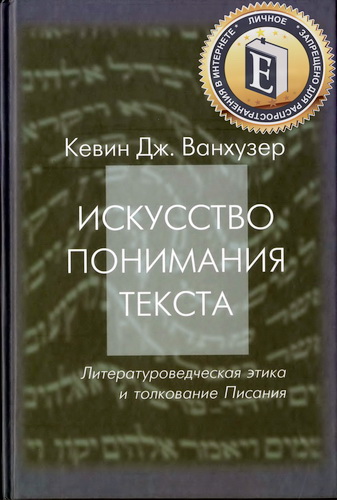
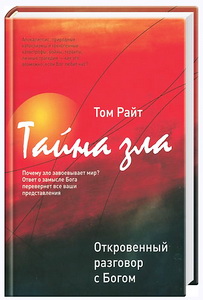
Комментарии
Пока нет комментариев. Будьте первым!